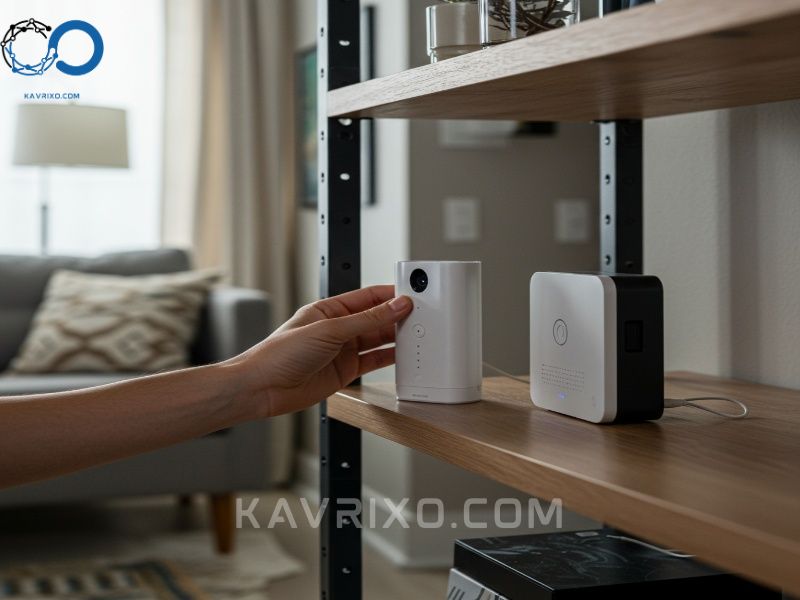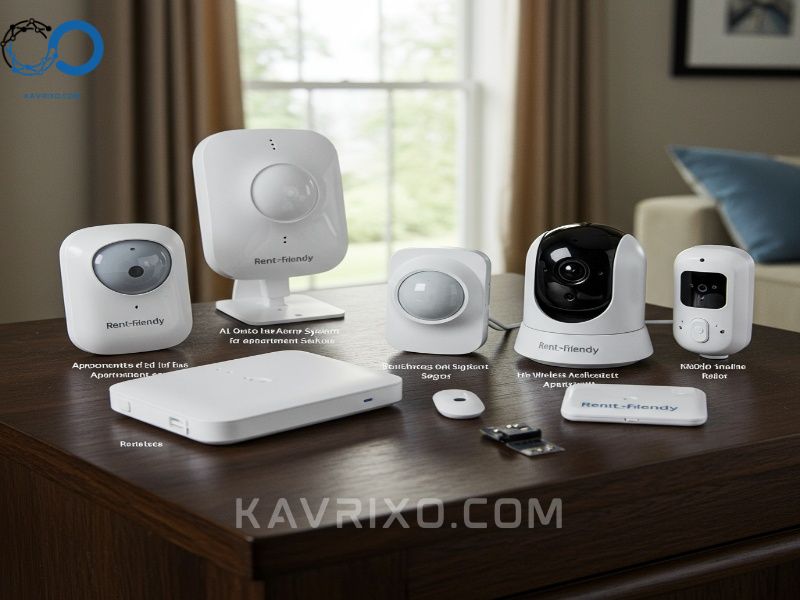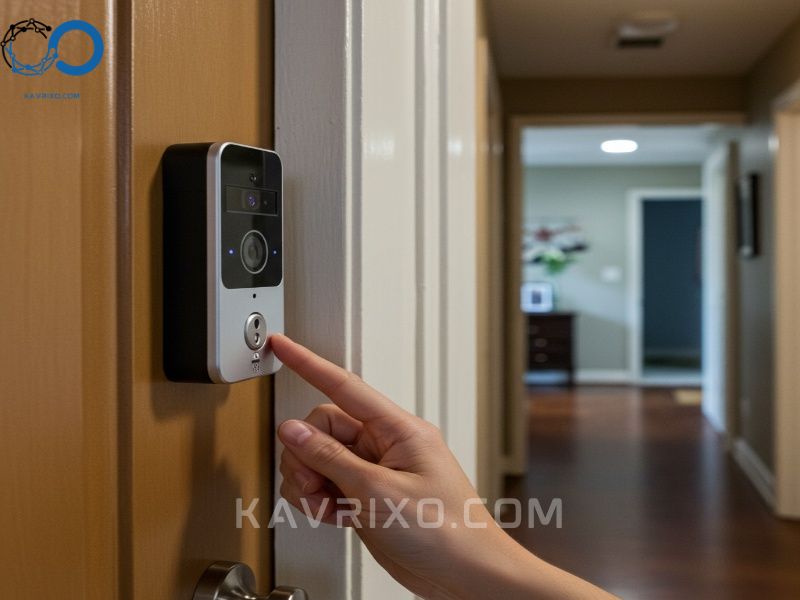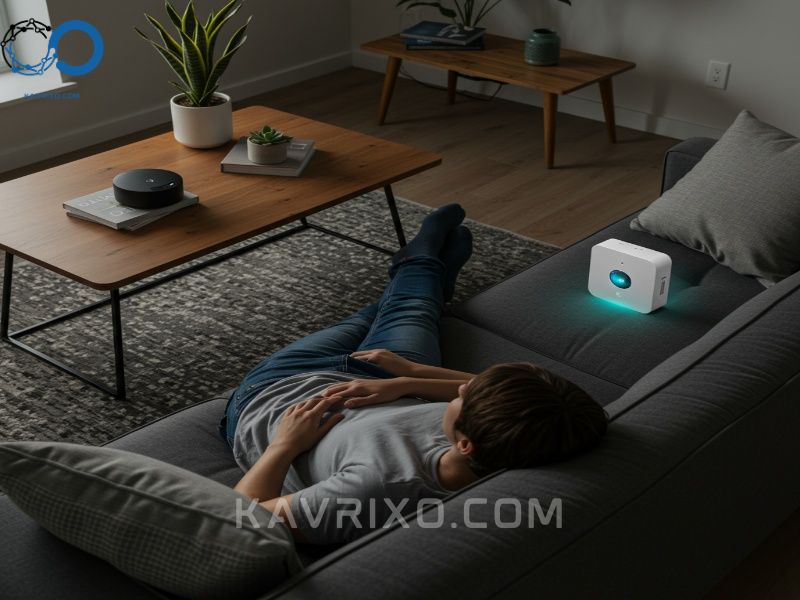Living in an apartment offers convenience, community, and often, a lower barrier to entry than owning a home. However, it presents unique security challenges. Unlike homeowners, renters must navigate the delicate balance between robust protection and lease agreements that often forbid permanent modifications. The goal isn’t just to install a system; it’s to implement comprehensive apartment security that is effective, discreet, and entirely reversible.
For those searching for the ideal solution—whether a basic apartment alarm system or a full suite of monitoring tools—the market is flooded with options. This extensive guide is designed to cut through the noise, providing practical, expert advice on selecting the best home security systems for renters, ensuring you maximize safety without sacrificing your security deposit. We’ll explore everything from physical reinforcement to the most sophisticated, yet simple-to-install, renter friendly security system options available today.
Contents
- 1 Understanding the Unique Challenges of Apartment Security
- 2 Foundational Steps to Enhance Apartment Security (Beyond Technology)
- 3 The Best Home Security Systems for Renters: Key Features to Look For
- 4 Deep Dive: Top Categories of Apartment Alarm Systems
- 5 Essential Apartment Safety Devices and Components
- 6 Installation and Maintenance: Making Your System Truly Renter-Friendly
- 7 Final Verdict: Achieving Peace of Mind with Robust Apartment Security
Understanding the Unique Challenges of Apartment Security
Before diving into specific products, it’s crucial to recognize why securing a rental property differs significantly from securing a detached house. Apartments often share walls, floors, and entrance points, creating vulnerabilities that require specialized attention.
Lease Restrictions and Installation Limitations
The single biggest hurdle for tenants seeking to upgrade their protection is the lease agreement. Most landlords prohibit drilling holes, running wires through walls, or making any permanent changes that could damage the structure. This eliminates many traditional, hardwired security setups.
The modern solution, therefore, must focus entirely on non-invasive, temporary installations. We are specifically looking for security systems for renters that rely on robust adhesive backing, tension mounts, or simple plug-and-play installation. A true renter friendly alarm system is one that can be packed up and moved to your next location without leaving a trace. When evaluating any potential security system for apartment use, always verify that the components require zero permanent modification.
While living in an apartment building often means access control at the main entrance, this communal access creates specific vulnerabilities.
- Lobby and Hallways: These common areas can be exploited by trespassers or package thieves who bypass the initial entry point. Your internal apartment door is often the last line of defense.
- Balconies and Ground Floor Windows: For ground-floor units or those with accessible balconies, exterior access becomes a critical concern. Standard apartment safety devices must include sensors for these lesser-used, yet highly vulnerable, entry points.
- Mail and Package Theft: In densely populated areas, package theft is rampant. A robust apartment security strategy must include measures to deter or track package theft, often utilizing video surveillance or secure drop boxes.
Proximity and Noise Concerns
Unlike a suburban home where a loud siren might only bother immediate neighbors, a piercing apartment burglar alarm in a dense building can quickly become a nuisance—and potentially lead to conflict with neighbors or building management.
When selecting an apartment alarm system, consider systems that offer tiered alerting:
1. Immediate notification to the user’s phone.
2. A localized, discreet siren (often built into the hub).
3. A full-blast siren if the threat is confirmed or ignored.
This tiered approach allows you to address false alarms quickly without disrupting the entire floor, a key feature of the best home security systems for apartments.

Foundational Steps to Enhance Apartment Security (Beyond Technology)
While technology provides the monitoring and immediate alerting, foundational physical steps are indispensable for boosting overall apartment security. These low-tech, high-impact measures serve as the first line of defense.
Strengthening Entry Points
A thief wants easy access. Making your main entry points resilient is perhaps the most cost-effective way to deter break-ins.
Upgrading Locks and Hardware
While you may not be able to change the entire lock mechanism without permission, most landlords allow tenants to improve hardware if it can be easily reversed.
- Reinforced Strike Plates: Standard strike plates (the metal plate attached to the door frame) are often secured by short screws that can be easily kicked in. Replacing these with heavy-duty plates secured by 3-inch screws driven deep into the stud significantly increases resistance to forced entry.
- Deadbolt Check: Ensure your main door has a quality deadbolt (not just a spring latch lock). If the existing deadbolt is weak, discuss upgrading it with your landlord, emphasizing the enhanced apt security systems benefit for the building.
Door Jammers and Tension Bars
For maximum, temporary reinforcement, especially beneficial for travelers or those who feel vulnerable, consider a door security bar or jammer. These devices wedge the door shut from the inside, providing exceptional resistance against kick-ins. They require zero installation and are highly recommended additions to any best apartment security devices checklist.
Utilizing Community Resources
Security isn’t just about sensors; it’s about awareness. Building relationships with neighbors and management enhances collective security.
- Neighbor Watch: Establish communication with trusted neighbors. If they know your schedule or recognize a strange vehicle, they can act as extra eyes. This human element is invaluable, even with the most sophisticated security alarm systems for apartments installed.
- Building Management Communication: Report broken locks, burned-out lights, or suspicious activity in common areas immediately. A well-maintained building is inherently safer. If you are installing an active burglar alarm systems for apartments, inform management so they are aware if the alarm is triggered.
The Importance of Smart Habits
Even the best security system for apartment living can be bypassed if basic habits are poor.
- Controlling Key Access: Never label your keys with your address or unit number. Be extremely cautious about who you lend keys to, including temporary service providers.
- Package Security: If possible, use Amazon Locker, P.O. Boxes, or utilize a video doorbell (often the first step in setting up home security for apartments) to monitor deliveries and retrieve packages promptly. Many modern apartment buildings are now installing secure package rooms, significantly improving apartment security against opportunistic theft.
The Best Home Security Systems for Renters: Key Features to Look For
When selecting a technologically advanced solution, remember that the criteria for renters are fundamentally different from those for homeowners. The focus must be on flexibility, ease of installation, and reversibility.
Wireless and DIY Installation
This is non-negotiable for renters. The ideal home security systems for renters are 100% wireless, communicating via Wi-Fi or cellular signal, and designed for tool-free, peel-and-stick installation.
- Adhesive Strength: Look for systems that use strong, but removable, adhesive strips (like 3M Command Strips). This ensures that when you move, the sensor comes off cleanly without damaging paint or drywall.
- Simplicity: The setup process for a security system for rental property should be manageable by anyone, typically involving plugging in a hub and pairing sensors via a smartphone app. This DIY aspect makes them inherently cheaper and faster to deploy than hardwired solutions.

Monitoring Options: Professional vs. Self-Monitoring
The type of monitoring dictates both the monthly cost and the response time when your apartment burglar alarm is triggered.
Self-Monitoring (The Budget-Friendly Choice)
Self-monitoring is standard for many cheap security system for apartment options. When an alarm is triggered, the system simply notifies you and your designated contacts (friends, family) via the app.
- Pros: Very low monthly cost (often just for cloud storage or cellular backup), full control over response.
- Cons: Requires you to be available 24/7 to receive and act on alerts. If you’re asleep or out of cellular range, response time is delayed.
Professional Monitoring (The Premium Safety Net)
Professional monitoring connects your security system for apartment directly to a central station staffed 24/7. When an alarm is triggered, staff verify the event and immediately dispatch emergency services (police, fire, or ambulance).
- Pros: Fastest response time, hands-off security, often required for insurance discounts.
- Cons: Higher monthly fees (often $20–$50 per month). Highly recommended for the best alarm system for renters who travel frequently or live alone.
Portability and Scalability
A major benefit of choosing a modular security system for apartment living is portability. When you move, the entire system—hub, cameras, sensors—moves with you.
- Portability: Verify that the system is designed to be easily uninstalled and reinstalled. This is a primary differentiator between a home security system and a proper security system for rental property.
- Scalability: Can the system grow with your needs? If you move from a one-bedroom to a three-bedroom apartment, you should only need to purchase extra sensors, not an entirely new hub. Look for systems that support dozens of individual sensors and cameras.
Deep Dive: Top Categories of Apartment Alarm Systems
To meet the diverse needs and budgets of renters, apartment alarm system options generally fall into three categories. Understanding these will help you pinpoint the best security system for renters based on your lifestyle.
Comprehensive All-in-One Kits
These systems are designed to provide robust, professional-grade monitoring in a DIY package. They are often cited as the best alarm system for apartment units because they combine reliability with flexibility.
- Features: Typically include a central hub (with a built-in siren), cellular backup (to protect against power or Wi-Fi outages), motion detectors, and multiple door/window sensors.
- Brands/Types: Often sold by major national monitoring companies who have adapted their services for the rental market. They offer the full spectrum of professional monitoring services.
- Ideal User: Someone seeking maximum peace of mind, willing to pay a monthly fee, and requiring a tested, reliable apartment security backbone.

Modular and Custom Security Alarms for Apartments
These systems offer the ability to build your own security package piece-by-piece, often integrating with existing smart home platforms (like Google Home or Alexa).
- Focus: Flexibility and customization. You might start with just a few security alarms for apartments (like door contacts) and add a camera or smart lock later.
- Integration: These are generally the best security systems for apartments for tech-savvy users, as they seamlessly integrate cameras, lighting, and environmental sensors under one app.
- Example Setup: Starting with a smart video doorbell and supplementing with two alarms for apartments (door sensors) provides strong perimeter protection without the commitment of a full subscription kit.
Cheap Security Systems for Apartments (Budget-Friendly Options)
For renters prioritizing cost and simple deterrence, extremely affordable options exist that require minimal investment and no monthly fees. These often function as specialized apartment safety devices rather than full systems.
- Stand-Alone Alarms: These include simple magnetic contact alarms that stick to the door/window frame. When the contact is broken, a very loud, localized siren sounds. They are excellent, cheap alarm systems for apartments for deterring immediate entry.
- Simulated Security: Timers for lights, fake TV simulators, and window decals indicating surveillance can provide significant deterrent value for minimal cost, enhancing basic home security for renters.
- Self-Monitored Cameras: Affordable indoor Wi-Fi cameras that send push notifications when motion is detected. While they don’t dispatch police, they provide evidence and immediate visual verification of a problem.
Essential Apartment Safety Devices and Components
Beyond the core hub and monitoring service, specific devices are crucial for comprehensive apartment security. These accessories fill the gaps left by traditional, static alarm panels.
Smart Locks and Keyless Entry Solutions
While changing the entire lock may violate your lease, many smart lock manufacturers offer “replacement cylinder” or “bolt-on” solutions that only replace the interior thumb-turn or key slot, leaving the exterior keyhole intact. Always check with your landlord first.
- Benefits: Keyless entry (codes, phone access), temporary access codes for guests or maintenance, and automatic locking features. Using a smart lock is a significant step toward robust home security for renters.
- Renter-Friendly Options: Look for smart deadbolts that install over the existing cylinder without requiring drilling into the door itself, ensuring it is a suitable security system for rental property application.
Door and Window Sensors
These are the backbone of any reliable apartment alarm system. They operate using magnetic contact: when the two halves separate (door or window opens), the circuit breaks, and the alarm is triggered.
- Vibration/Glass Break Sensors: Essential additions to standard magnetic sensors. These detect the specific frequency of breaking glass or heavy impact, offering protection even if the window is shattered but not opened. These specialized sensors drastically improve the effectiveness of burglar alarm systems for apartments.
- Placement: Ensure every accessible ground-floor window and balcony door is equipped. Don’t forget basement windows or storage unit access if applicable.
Indoor Cameras and Video Doorbells
Video evidence is critical for police reporting and insurance claims.
- Video Doorbells: The single most popular best apartment security devices. They monitor the most vulnerable point—the front door—and allow two-way communication. For renters, look for battery-powered or peephole camera versions that require zero drilling or wiring into the existing electrical system.
- Indoor Cameras: Ideal for monitoring pets, verifying alarms, and watching valuables. Crucially, always place indoor cameras so they do not infringe on a neighbor’s privacy (i.e., don’t point them out a window toward another unit).

Environmental Monitoring (Smoke, CO, Water Leaks)
While often overlooked in the discussion of intrusion, non-intrusion emergencies pose equally serious threats.
- Flood Sensors: Small, inexpensive sensors placed near washing machines, water heaters, or under sinks. These are vital for renters, as water damage is a frequent cause of conflict and security deposit loss.
- Integrated Smoke/CO: Many modern alarm systems for renters offer integrated smoke and carbon monoxide detectors that alert the monitoring center (and you) much faster than standard, unmonitored alarms.
Installation and Maintenance: Making Your System Truly Renter-Friendly
Even after purchasing the best alarm system for renters, proper installation and maintenance are key to longevity and lease compliance.
Avoiding Permanent Modifications
The cardinal rule of apt security systems for tenants is simple: nothing permanent.
- Adhesive Best Practices: Before applying any adhesive sensor, clean the surface thoroughly with alcohol wipes. This ensures maximum adhesion and reduces the chance of the sensor falling off—a major source of false alarms.
- Cable Management: If you must run power cords (for cameras or hubs), use flat cable covers or removable cable clips rather than tacking wires to the wall. Keep cords neat and hidden to maintain a professional appearance that won’t invite scrutiny from building management.

Testing and Troubleshooting Your Apartment Burglar Alarm
A security system is useless if it fails when you need it most. Regular testing is mandatory.
- Weekly Sensor Checks: Once a week, open every protected door and window to ensure the sensor registers the event. If you have professional monitoring, call the monitoring station before testing to put the system into test mode, preventing false dispatch.
- Battery Management: The lifespan of batteries in wireless security alarm systems for apartments varies, but most last 6 months to 2 years. Pay close attention to low-battery alerts generated by the system’s app, and replace them immediately. A dead sensor means a vulnerable entry point.
Insurance Benefits and Discounts
One of the often-unseen benefits of investing in robust apartment security is the potential reduction in your renter’s insurance premium.
- Proof of Protection: Most insurance providers offer discounts (often 5% to 20%) if you can prove you have a monitored home security system for apartments, particularly one with fire and intrusion detection.
- Inventory Documentation: Regardless of the system you choose, always maintain a detailed, video-recorded inventory of your high-value belongings. This documentation is crucial should you ever need to file a claim following a break-in or fire, streamlining the process of recovering from a breach in apartment security.
Final Verdict: Achieving Peace of Mind with Robust Apartment Security
The landscape of apartment security has never been better for renters. The proliferation of DIY, wireless technology means you no longer have to choose between keeping your security deposit intact and keeping your belongings safe.
By focusing on renter friendly security system options—those that are easy to install, use strong adhesives, and are completely portable—you can implement a security strategy that rivals the protection of any traditional homeowner setup.

Whether your budget dictates a cheap security system for apartment monitoring that relies on simple, loud alarms, or you opt for the premium professional monitoring of the best security systems for apartments available today, the key is consistency. Layer physical reinforcement (strong locks) with technological oversight (sensors, cameras) to create a comprehensive shield. Investing in apartment security is not just about protecting possessions; it’s about investing in your comfort, privacy, and ultimately, your peace of mind. Select your security system for apartment needs wisely, install it correctly, and enjoy the safety that comes with being prepared.
